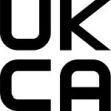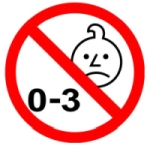In the guide
This guidance is for England, Scotland and Wales
There are a number of labelling requirements for toys, including the name and address of the manufacturer / importer, the type, batch, model or serial number, the UKCA / CE mark, and warnings and instructions.
The Toys (Safety) Regulations 2011 set out the legal requirements for the safety of new toys supplied by a business. Toys are defined as "products designed or intended (whether or not exclusively) for use in play by children under 14 years old".
There are slightly different requirements for second-hand toys as they are not covered by the same Regulations as new toys.
Labelling
All new toys that you supply in the course of a business must be marked with:
- the name and address of the manufacturer
- if the manufacturer is outside of the UK, the name and address of the manufacturer and the importer into the UK are to be used instead
- type, batch, serial or model number
- the UKCA and / or CE mark


The UKCA / CE mark is a declaration by the manufacturer that the toy is safe.
These marks must be on the toy or its packaging and be permanent and easy to read.
On small toys these marks may be on:
- a label attached to the toy
- an accompanying leaflet
For more information on the UKCA and CE marks - as well as the UKNI mark - see 'UKCA / CE marking'.
Back to topWarnings and instructions
Some toys must come with warnings and instructions about precautions that need to be taken to ensure safe use. Special warnings are required as follows (and where specific instructions are required, you should seek further advice or refer directly to the Regulations):
- toys that are not suitable for children under three require a warning to this effect, plus the reason why - for example, choking hazard. This can be in the form of a pictogram or words (this symbol should never be found on toys that are suitable for children under three, such as rattles, teethers and soft-bodied toys)

- swings, slides and similar toys require instructions for assembly, and for periodic checks and maintenance
- 'functional' toys (those that are used in the same way as, and are often scale models of, appliances or installations intended for adults) require the following marking: 'Warning: to be used under the direct supervision of an adult'. They also require specific safety instructions and an indication that they must be kept out of the reach of very young children
- toys containing inherently dangerous substances or preparations (such as chemical toys) require specific safety instructions, a statement of a minimum age limit for use and a statement that the toy is to be used under adult supervision. Where appropriate, additional requirements as to labelling and packaging may apply under Regulation (EC) No 1272/2008 on classification, labelling and packaging of substances and mixtures
- toys such as skateboards or skates require specific instructions and the following marking: 'Warning: protective equipment should be worn. Not to be used in traffic'
- toys for use in the water (such as rubber rings) require the following marking: 'Warning: only to be used in water in which the child is within its depth and under adult supervision'
Second-hand toys
Toys that are second-hand are covered by the General Product Safety Regulations 2005 - rather than the Toys (Safety) Regulations 2011 - and therefore do not need to be labelled with the UKCA / CE mark or the address of the manufacturer / importer, although they must still be safe. The special warnings and instructions (see above) are required for both second-hand and new toys.
You are advised to only sell second-hand toys that are UKCA / CE marked, contain any relevant instructions or warnings and have been checked for any obvious faults.
Back to topYour responsibilities
When you have reason to believe a toy is unsafe and presents a risk - for example, you receive a complaint that a toy has injured a child - you must:
- inform Trading Standards and your supplier of the risk
- withdraw the toy from sale, if appropriate
- provide Trading Standards with information about:
- the risk presented by the toy
- the non-compliance in question
- any actions taken
Your local Trading Standards service may request cooperation in relation to any action undertaken.
You must ensure that whilst a toy is under your responsibility the conditions under which it is stored or transported will not jeopardise the toy's safety.
Finally, for a period of 10 years, you must be able to identify the business that supplied you with the toy (in other words, you need to keep invoices etc).
Back to topRealistic toy guns
Imitation firearms cannot be sold to under-18s. Toy retailers must be careful not to inadvertently sell what may seem to be a harmless toy gun, but which the law may actually view as being an imitation firearm.
See 'Crossbows, air weapons and imitation firearms' for more information.
Back to topToy manufacture
If you make toys as well as sell them, there are many more requirements than can be covered in this guide. Please contact your local Trading Standards service for advice. You will also find useful information in the guidance linked to below.
Back to topFurther information
The Office for Product Safety and Standards (OPSS) has published guidance on the Toys (Safety) Regulations 2011. The guidance takes into account amendments to the legislation made as a result of UK leaving the EU.
Back to topTrading Standards
For more information on the work of Trading Standards services - and the possible consequences of not abiding by the law - please see 'Trading Standards: powers, enforcement and penalties'.
Back to topIn this update
No major changes.
Last reviewed / updated: August 2023
Back to topKey legislation
General Product Safety Regulations 2005
Regulation (EC) No 1272/2008 on classification, labelling and packaging of substances and mixtures
Toys (Safety) Regulations 2011
Product Safety and Metrology etc (Amendment etc) (EU Exit) Regulations 2019
Please note
This information is intended for guidance; only the courts can give an authoritative interpretation of the law.
The guide's 'Key legislation' links often only shows the original version of the legislation, although some amending legislation is linked to separately where it is directly related to the content of a guide. Information on changes to legislation can be found by following the above links and clicking on the 'More Resources' tab.

